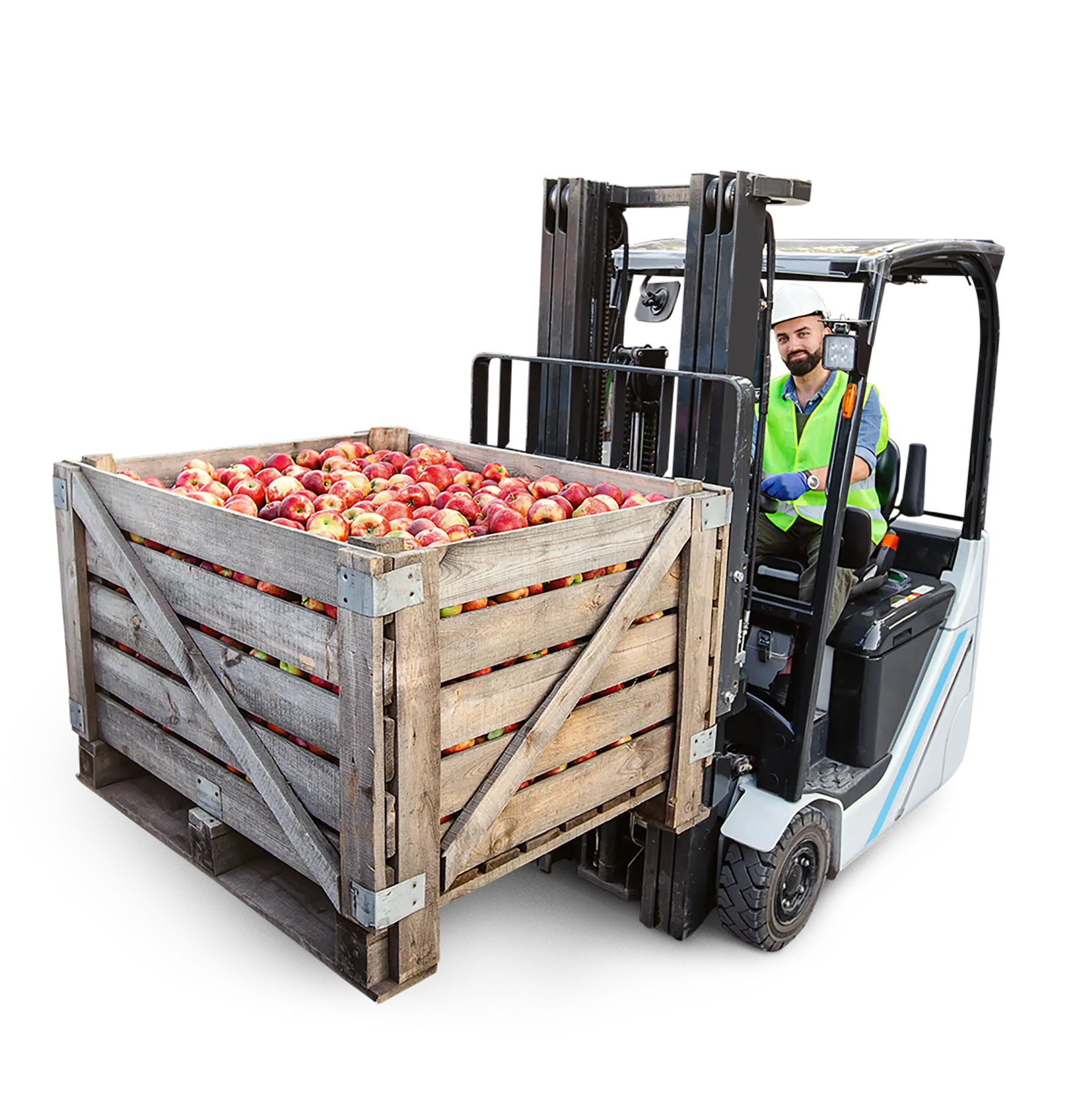Featured in this post
ERP Systems for Food Manufacturers: The Key Features for Maximizing ROI
ERP Systems for Food Manufacturers: The Key Features for Maximizing ROI

Your food and beverage business must allocate their financial resources with care, especially considering that profit margins in the industry have historically been slim, relatively speaking. Your organization’s bankroll is far from infinite, so each purchase you make must be seen as an investment and come with the expectation of returns down the road.
That being said, the cliché that it “takes money to make money” still rings true today—perhaps more than ever with competition as fierce as it is. Undertaking the critical initiative of digital transformation, including the implementation of an industry-specific enterprise resource planning (ERP) solution, allows your company to build a foundation for a successful future.
But what exactly can you expect from your food ERP software in terms of returns, and what forms will they take? Plus, how can you determine which combination of system, vendor and deployment method will lead to the best outcome? These and other very valid questions may well come to mind as you begin even just a cursory search for the options available to you.
With this post, we aim to answer the above items and more so that you can feel more prepared for taking the next step and engaging with the right provider given your organization’s circumstances. We’ll walk you through all of the sources of return on investment (ROI) from ERP systems for food manufacturers, as well as the features to look for in any solution you consider.
Understanding the ROI of ERP Systems for Food Manufacturers
Before you can begin to explore the best approach for optimizing the ROI of your ERP for food manufacturing, it’s a good idea for you to refresh your understanding of the concept and explore the different kinds of returns such a solution can deliver. Let’s begin with the basic definition of ROI, which is perhaps best expressed with this deceptively simple calculation:
ROI = [(value of investment – cost of investment)/cost of investment] x 100%
The cost of your investment here will include both what you pay for the software you choose as well as any implementation, maintenance and training costs. However, extra costs can be avoided in part by choosing a solution with a user-friendly interface that allows for accelerated employee on-ramping and a flexible cloud deployment that requires no additional hardware.
The value of your investment, on the other hand, can be a bit more complicated to pin down. From the time of initial deployment, the positive impact on your business’s operations will be apparent. These benefits will contribute to that and also provide their own advantages, some directly measurable and others more intangible:
Improved efficiency via workflow and process automations, including production scheduling, quality checks and ingredient list creation
Faster, better decision-making and actionable insights thanks to the single source of truth of a unified database
Reduced food waste through real-time production performance monitoring and recipe control tools that offer enhanced precision
Better food safety and full recall readiness with bidirectional ingredient and product traceability
More accurate alignment of supply and demand, helping to prevent surpluses and shortages, through real-time inventory and order management functionalities
Greater resilience to disruption and enhanced customer service thanks to supply chain visibility
There are still more ways your food and beverage business can unlock operational improvements through food ERP software, as these systems truly are all-in-one, cross-departmental platforms. It’s also worth noting the potential to unlock additional benefits for an organization, as they eliminate the need for tedious paper-based record-keeping and manual collection of data.
Features That Boost ROI of ERP Systems for Food Manufacturers
When it comes to maximizing the ROI of your ERP for food manufacturing, your effort should begin in the research phase. You’ll want to carefully and deliberately evaluate the features offered by each solution you consider, taking into account their potential impact on your company’s profitability, applicability to your sub-vertical’s unique challenges and approachability for everyday users.
The following digital tools and functionalities of advanced food ERP software are those with the most potential to directly boost profitability or unlock cost savings, which are two of the most significant factors that go into ROI:
Business Intelligence (BI) – This feature can improve your data collection and analysis capabilities and allow you to model “what if” scenarios to observe how changes in certain variables could affect your outcomes. This enables improved forecasting and helps to detect and dig into the root causes of issues. Aptean Food & Beverage ERP’s BI application comes ready to track more than 500 KPIs, over 300 of which are specific to the food industry, helping you monitor them over time and analyze them in conjunction with other data.
Advanced Workflow – With this feature, you can simplify complex processes and improve efficiency by automating the progression of tasks along a predetermined set of steps. This eliminates the need for manual hand-offs or reminders when it’s time for the next team to take over. The advanced workflow app of Aptean Food & Beverage ERP can deploy email alerts to further streamline employees’ tasks and accelerate timelines.
Forecasting – By allowing you to quickly create data-driven forecasts using historical sales and current inventory levels, this feature helps you avoid shortages that limit your profitability and surpluses that would result in a waste of resources. Our solution’s forecasting tools can offer more detailed projections for specific customers and also automatically import and apply sales and consumption figures, saving your workers valuable time.
Production Planning – Accurately aligning supply with demand is much easier with this feature, as it puts key data at the fingertips of your production managers—meaning that they can ensure all the materials you need to fulfill orders are on-hand without ending up with leftovers that can’t be leveraged. And our food ERP’s production planning functionalities go a step further, allowing your planners to reserve supply, accommodate made-to-order requests and receive alerts if changes would upset the balance.
Expiration Management – Considering many ingredients and finished goods in the food industry are perishable, this feature serves the critical need of tracking the expiry dates of all lots and items in your inventory. The expiration management application of our software can also issue proactive warnings when goods are approaching the end of their window of viability so that they can be prioritized for use before they spoil.
Trade Management – This Aptean Food & Beverage ERP differentiator facilitates the creation of multiple individual trade agreements with different customers using varied rates and other special considerations like discounts, rebates, broker commissions, royalties and billbacks. The greater pricing flexibility this offers, combined with the app’s intuitive algorithms that can calculate optimal configuration of your agreements, can make a real difference for your revenue.
Advanced Pricing – Another differentiator for Aptean Food & Beverage ERP, this tool lets you go beyond standard pricing scenarios and accommodate certain nuances that are unique to the food industry. It enables hierarchical pricing structures with multiple tiers spanning different customer groups, allows for greater flexibility in discount methods (both percentages and whole-dollar amounts) and the ability to toggle between using the shipment date or promised delivery date to determine your rate.
These aren’t the only functionalities that contribute to the ROI on your food ERP software. For example, a production scenario tool can help you stay productive with easy implementation of backup plans when necessary, and a built-in customer item catalog can increase sales by making it easier for your clients to make purchases.
That being said, the seven features we’ve highlighted can each lead to a substantial increase in profitability when leveraged to their fullest extent and thus have the biggest impact on your ROI. Of course, you also need the right provider and support if you really want to maximize the value of your ERP system—but that’s something we’ll discuss in more detail in this final section.
Aptean: The Partner You Need for Optimal ROI on Your ERP
Ready to reap all the benefits of ERP systems for food manufacturers described above and realize a robust ROI that will propel your business toward growth? There’s no shortage of options and alternatives on the market, but we’ve got several reasons why you need look no further than Aptean for the name to trust with your software needs.
First, there’s our collective decades of industry expertise and strong commitment to the food and beverage space, which has afforded our dedicated professionals a deep understanding of the complexities of today and the best practices to overcome them. We “speak your language” and have built tools that solve unique challenges.
Our solution was also developed specifically for food and beverage companies and for that reason has tremendous “out of the box” value. With Aptean Food & Beverage ERP, there’s no need for expensive modifications, customizations or add-ons—it starts delivering value for your organization as soon as it’s rolled out.
Speaking of implementation, our service and support teams will be there to help you with the process, assisting in the creation of a project timeline and applying their specialized knowledge to the task for a smooth deployment.
We also offer and encourage flexible cloud setups on the Software as a Service (SaaS) model that provide full scalability, stronger data protection, enhanced cybersecurity and greater accessibility. This implementation method has substantial financial advantages, too, with IDC’s Global Food and Beverage Industry Trends and Strategic Insights 2022 whitepaper showing 6.2% profitability increases for organizations with cloud deployments versus just 2.8% for those with on-premise ERP installations.
Then, there’s the fact that our software features industry-specific technology build on the Microsoft Dynamics 365 Business Central platform, which lends it a familiar and user-friendly interface that’s easy to learn. Finally, consider that Aptean Food & Beverage ERP was recognized with Frost and Sullivan’s 2022 Product Leadership in North American ERP Software for the Food and Beverage Software in the Industry, which is a testament to our offering’s quality, performance and reliability.
So, want to know more about our ERP system for food manufacturers and how it has all the features you need to maximize your ROI? Contact us today or request a personalized demo.
How To Thrive During Food and Beverage Market Turbulence
Prioritizing modernization, optimization and a sound strategy is necessary for success in the food and beverage industry. Increase operational agility in a continually changing (and often unpredictable) manufacturing landscape.



 John McCurdy | Senior Content Writer, Marketing
John McCurdy | Senior Content Writer, Marketing